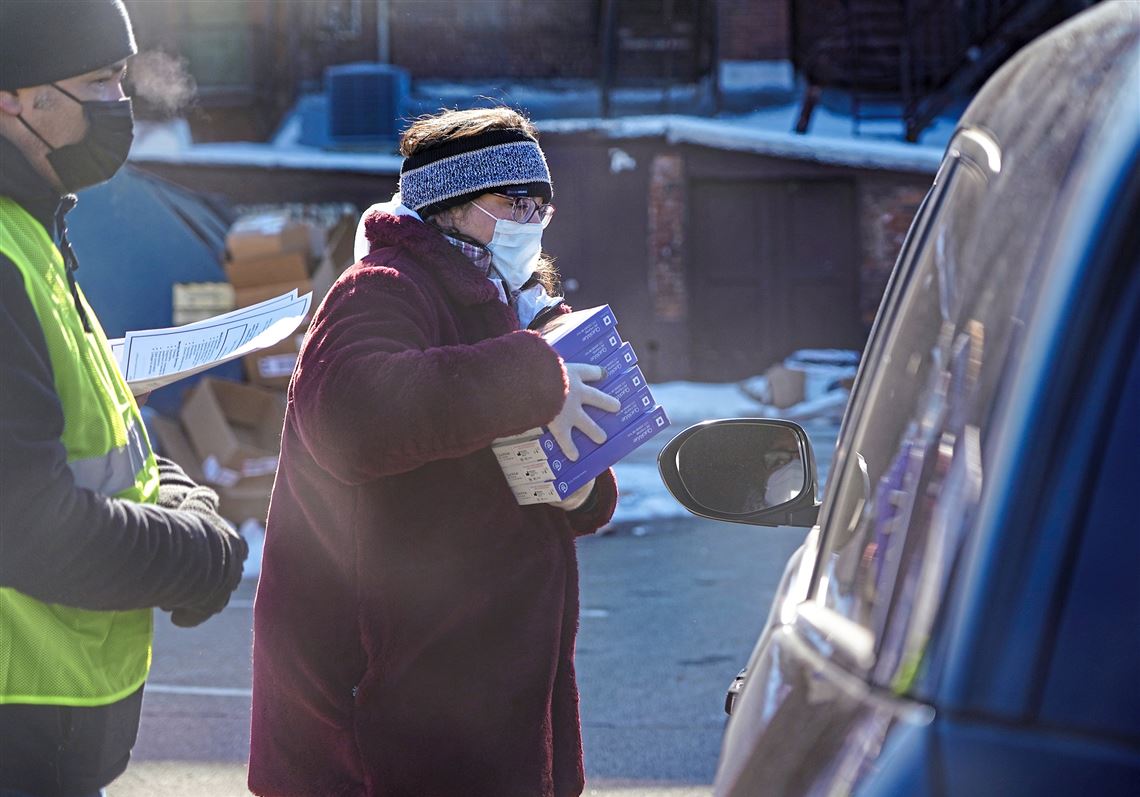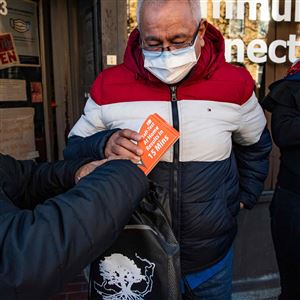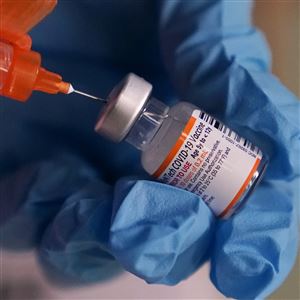This article was updated at 3:45 p.m. on Tuesday, Jan. 25, 2022.
In a sign that the omicron surge may be peaking, new COVID-19 cases in Allegheny County were down by nearly half last week compared with the previous week.
For the week of Jan. 16-22, there were 11,821 new coronavirus infections, according to the latest data from the Allegheny County Health Department. About 8% of those cases were reinfections and 44% were of unvaccinated individuals.
That’s a 47% decrease in cases from the week of Jan. 9-15, when the county Health Department recorded 22,326 new coronavirus infections.
The change is keeping with patterns in many other parts of the country, where cases are dropping in places hit early with the highly transmissible omicron variant.
“We had a dramatic rapid increase in cases in December, followed by a plateau in cases early to mid-January, and are now starting to see a significant decline in cases,” Dr. Debra Bogen, director of the Allegheny County Health Department, said in an email. She stressed that it’s still important to get vaccinated, wear properly fitting masks, maintain physical distance and stay home and get tested if you feel sick.
While the drop in cases is certainly an encouraging sign, it doesn’t necessarily mean that the pandemic is ending.
“I don't think we've seen the end of it,” LuAnn Brink, chief epidemiologist at the Allegheny County Health Department, said in an interview Friday. COVID-19 hospitalizations are still high, and deaths have not yet started to decline.
During the week of Jan. 16-22, there were 72 virus-related deaths among county residents, up from 35 deaths the week of Jan. 9-15, according to the Health Department. Because of the time it takes for COVID-19 to progress to the point of hospitalization or death, a drop in cases won’t immediately lead to fewer deaths.
To date, there have been 240,349 infections, 11,742 hospitalizations and 2,835 deaths reported in Allegheny County residents.
Ms. Brink predicts that cases will continue to decrease in the weeks to come but that COVID-19 is unlikely to disappear entirely. “I think it will continue to smolder and that's if we don't get a new variant,” she said.
She said the county Health Department is continuing to monitor for variants of concern — the official public health designation for a coronavirus variant like omicron, meaning one that appears to spread more quickly, cause more severe disease or evade antibodies.
Statewide, cases are also trending downward, according to the latest data from the Pennsylvania Department of Health. From Jan. 17-23, the daily average number of cases was about 15,300, a nearly 40% decrease from the week before, when the state was averaging around 25,400 new cases a day.
“It is much too early to let down our guard,” Pennsylvania’s acting Secretary of Health Keara Klinepeter said in a statement. “What we have seen during previous surges is that hospitalizations remain high for a couple of weeks after case counts start to decline.”
Despite the decline in cases, Pennsylvania hospitals are still seeing surging hospitalizations. Around 6,000 Pennsylvanians are currently hospitalized with COVID-19, about 13% lower than on Jan. 17 but still considerably higher than at the same time last year. Those in the hospital now probably caught the virus a few weeks ago.
Despite omicron causing record-high numbers of cases and hospitalizations, new data from the Centers for Disease Control and Prevention shows that patients are staying in the hospital fewer days and are less likely to die than during previous pandemic peaks.
Because of staffing shortages, state officials are encouraging residents to avoid seeking COVID-19 tests at hospitals and instead get tested elsewhere.
Emily Mullin: emullin@post-gazette.com.
First Published: January 25, 2022, 6:26 p.m.





















